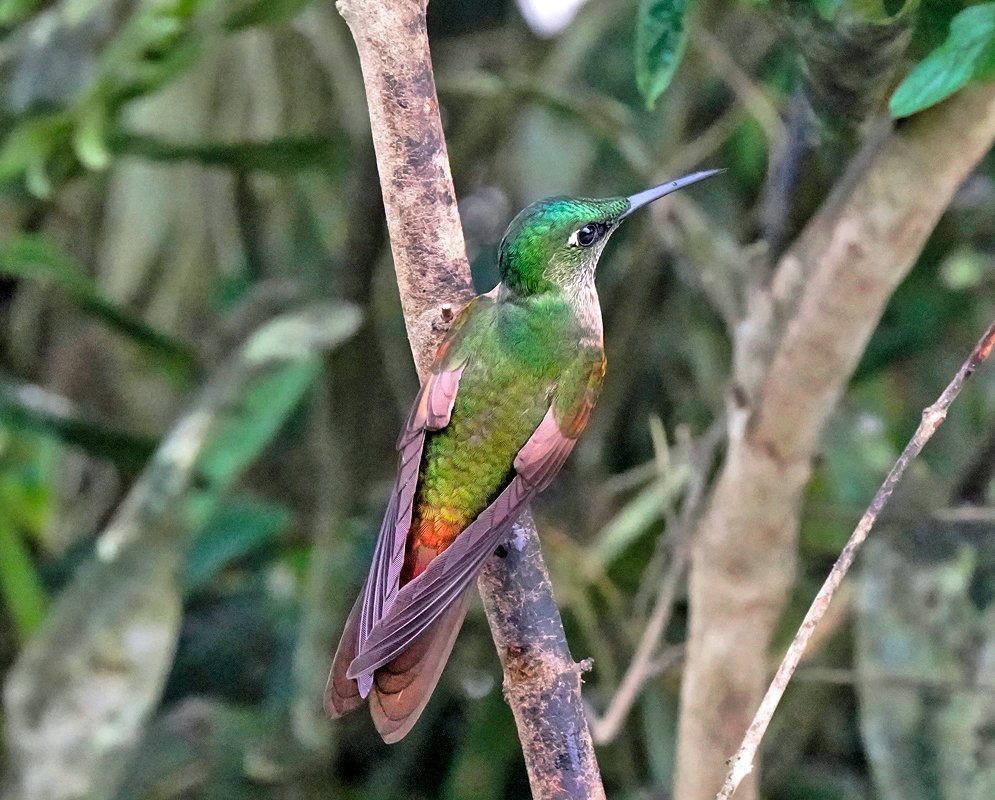This post has 11 Simple Fields-fields attached. Show fields.

Heliodoxa rubinoides is a hummingbird species that ranges along the Andean slopes from Venezuela through Colombia, Ecuador, and northern Peru, primarily inhabiting humid montane forests between 4,600 and 8,500 feet in elevation. It occupies forest interiors and edges as well as shaded secondary growth, often favoring areas with abundant flowering shrubs and bromeliads. It is currently classified as Least Concern by the IUCN, with a stable population and a relatively wide distribution across its native range.
Males measure about 4.3 to 4.7 inches in length and display a metallic green body with a prominent, shimmering rose-violet throat patch and a slightly forked dark tail. Females lack the bright throat coloration and instead show green upperparts with pale gray underparts that are finely mottled with green. The species possesses a medium-length straight black bill adapted to extract nectar from tubular flowers, and it often forages by hovering or perching near its food sources. Insects are also part of its diet, captured in midair or plucked from foliage. It exhibits territorial behavior around productive nectar sites and is frequently observed chasing other hummingbirds from preferred flowers. Photographed in north-western Ecuador.



